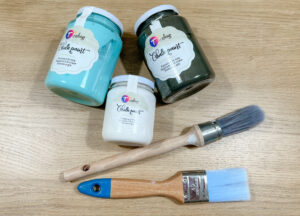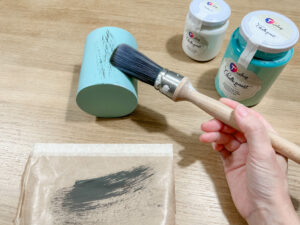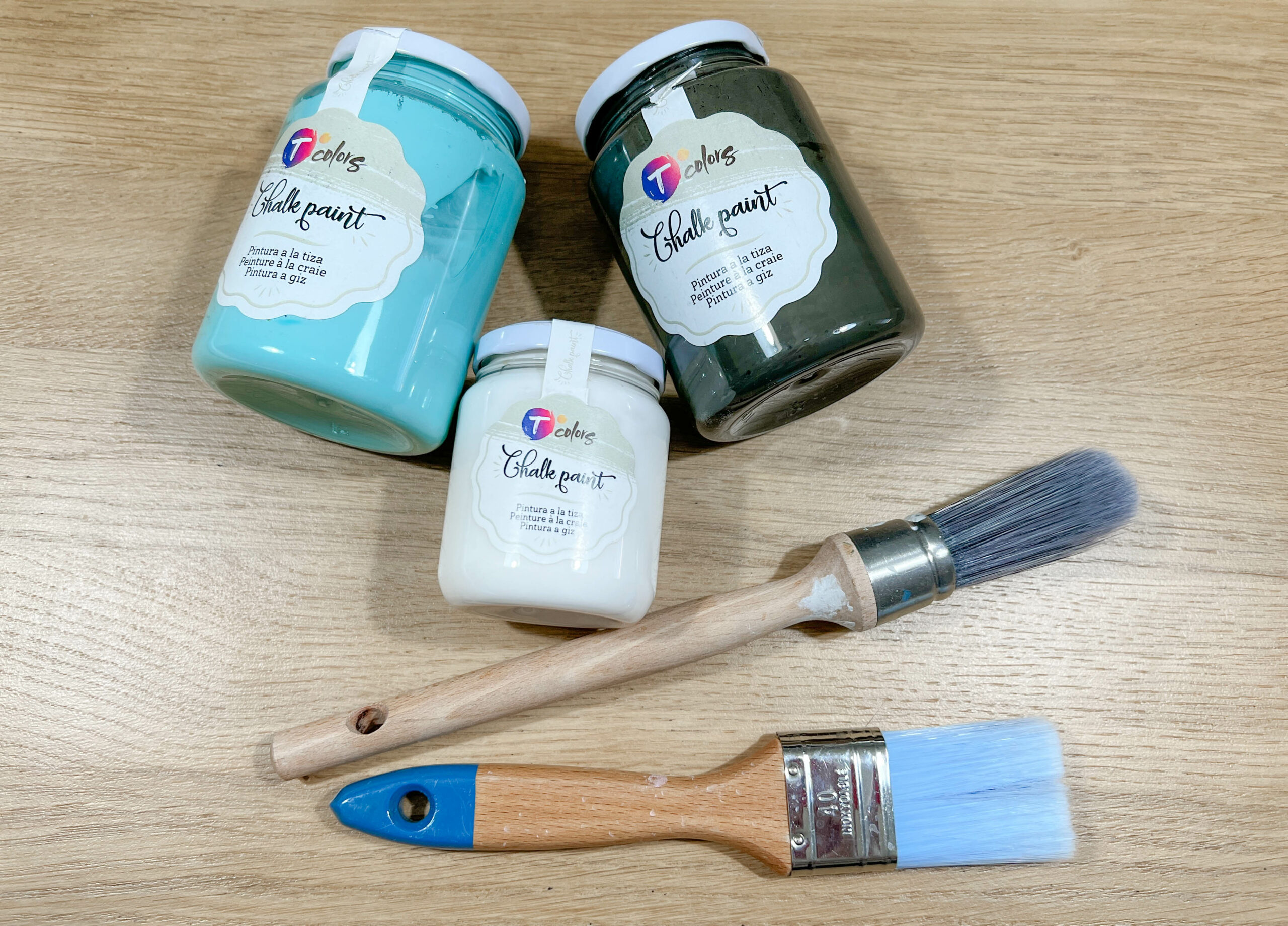In this post, you will discover the dry brush technique, a popular decorative tool that will allow you to easily transform furniture and objects. We collaborated with Mari Luz Santander (@bricoydeco), a content creator and expert in DIY, who showcased this technique at the Eurobrico 2023 fair. You will learn what it consists of and how to apply it to obtain spectacular visual results.
What is the dry pincel technique?
The dry brush technique, also known as “pincel seco” in Spanish, is a popular way to decorate furniture and objects because of its ease of learning and the impressive visual results it offers. With this technique, you apply a small amount of paint to the brush, which gives the object a less intense tone and creates decorative effects, such as distressing. Mari Luz from Bricoydeco.com taught us this incredible process in one of our charity workshops.
Necessary materials:
To apply this technique, you will need the following materials:
- Brush, brush or paletina: It is recommended that the bristles are hard or semi-hard and synthetic hair, as they are ideal for water-based paintings.
- Paint: TColors acrylic paints and Chalk Paint are recommended options, as they are water-based, EN-71 certified and allergen-free, in addition to having a wide range of colors.
- Paper or mix palette (optional): You can use paper or a mix palette to discharge the paint, which means the brush or brush will only carry a little color.

How to apply the dry brush technique?
To achieve a minimal paint load on the brush with TColors chalk paint, it is essential to have a surface where you can perform an initial discharge. A cloth or a napkin becomes the ideal place to deposit the first color stain, thereby creating two fundamental effects:
- “Avoid applying a large amount of paint abruptly, as the brush releases some of the excess paint previously accumulated on the mixing palette or container. This ensures that we use a minimal amount of color.”
- Evenly distribute the paint across all the bristles of the brush so that each stroke provides a uniform feeling across all points of the brush.
This technique not only contributes to saving paint but also allows achieving effects close to blending in the case of oil paintings or reflective surfaces, such as those required to represent armor on miniatures. To master this technique, it is necessary to dedicate time to practice and have patience to acquire the necessary skill. Your initial attempts may be acceptable, but as the years go by, you will notice a significant improvement in your results. How to apply the dry brush technique: To achieve a weathered effect with this technique, follow these steps:
a weathered effect with this technique, follow these steps:
- Paint the support with acrylic paint or Chalk Paint of your favorite color and wait for it to dry completely.
- Escoger un color que contraste con el de base (por ejemplo, negro sobre blanco) y manchar ligeramente el pincel o brocha.Paint the support with acrylic paint or Chalk Paint of your favorite color and wait for it to dry completely.
- Apply the dry brush on the surface using longitudinal brushstrokes, blurring the stroke with each pass.
- To highlight the pickling effect, paint with the dry brush the areas of the furniture that tend to wear naturally, such as corners and edges.
- Wait for it to dry and apply wax or varnish as a final finish.
 The dry brush technique is a simple and effective way to decorate furniture and objects with paint. With this technique, you can achieve impressive transformations and unique customizations for your home. Give it a try and let your creativity soar! Experiment with different colors and enjoy the spectacular results you’ll achieve.
The dry brush technique is a simple and effective way to decorate furniture and objects with paint. With this technique, you can achieve impressive transformations and unique customizations for your home. Give it a try and let your creativity soar! Experiment with different colors and enjoy the spectacular results you’ll achieve.





